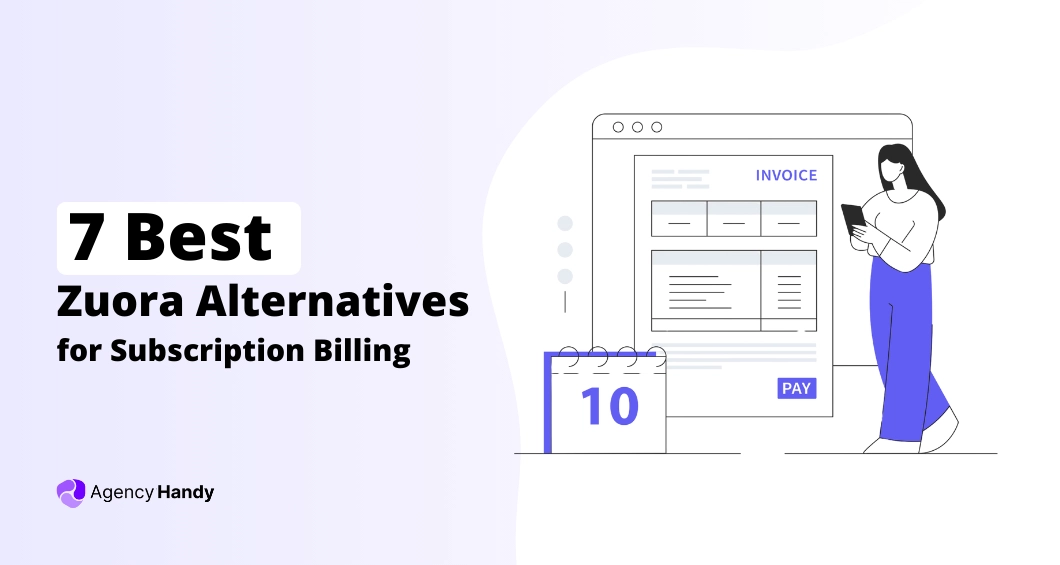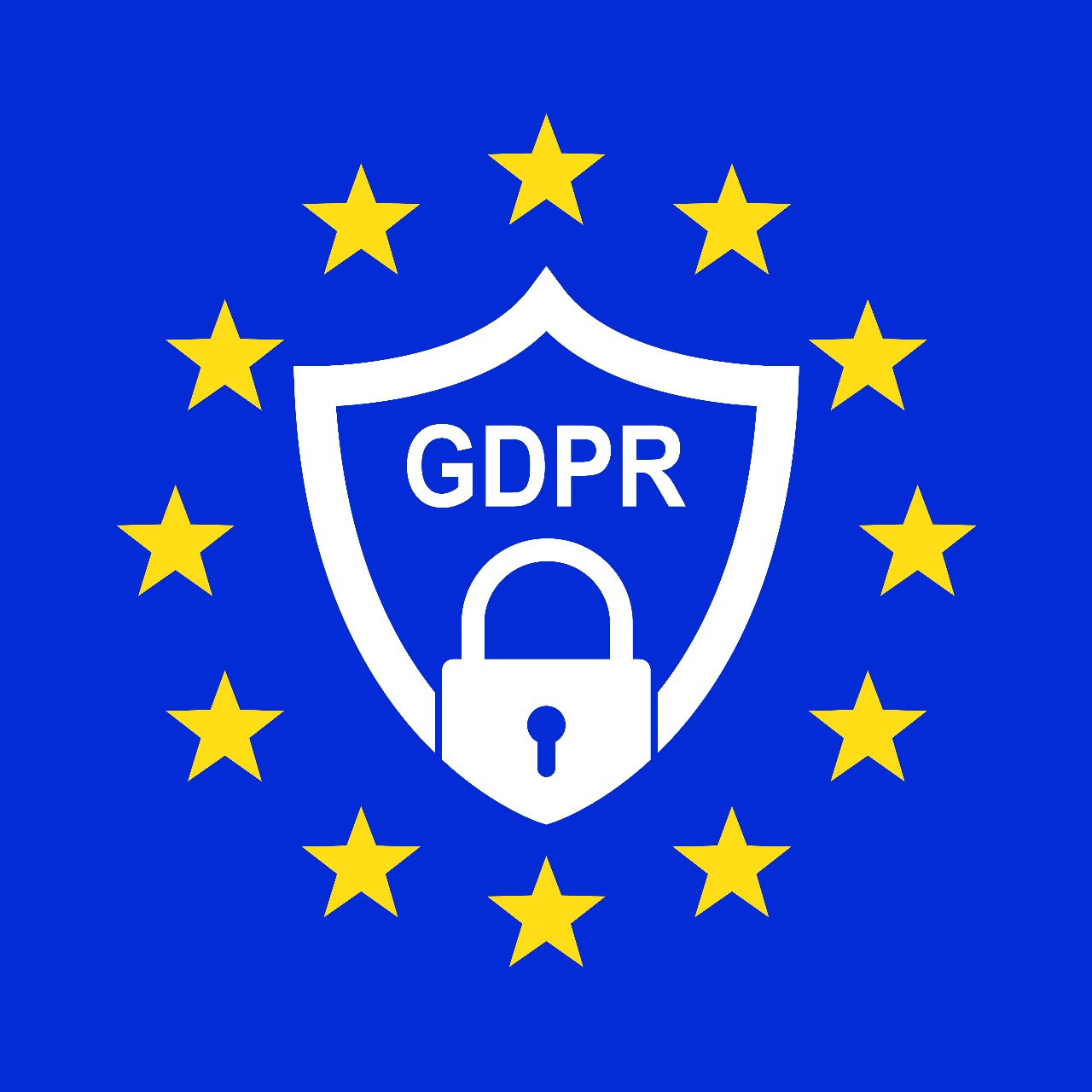You’ve established your agency and its core offerings.
Now it’s time to build the team behind it. But where do you start? Which roles matter most? And what kind of agency team structure will actually help you scale instead of slowing you down?
Well, many founders hit this wall. So, up next, we’ll break down the most effective team structures, key roles to hire first, and how to organize your agency.
Key Takeaways
- From Traditional, Functional, Geographic, and Flat to Pod, Matrix, On-Demand, and Eclectic, each team structure supports different agency goals.
- A strong team structure defines roles, prevents overlap, and ensures everyone knows where they fit.
- No matter which model you choose, Agency Handy can help agencies stay organized, track projects, and communicate effortlessly across teams.
Top 7 Agency Team Structures to Build A Winning Agency Team
Every agency grows differently, and so does its internal structure. Plus, the proper setup depends on your size, culture, and type of services. Still, most agencies fall into familiar patterns.
So, let’s explore some widely used team setups and what each offers in practice. —
1. Traditional Hierarchical Structure
The traditional hierarchical team structure is the classic top-down pyramid replicated within departments. For example, a creative team might have a Creative Director at the top, followed by Senior Designers, Mid-Weight Designers, and Junior Designers.

Everyone knows who they report to, and authority flows in a straight line from top to bottom. In fact, this model is standard in well-established agencies that value clear leadership and formal decision-making.
| Pros | Cons |
| Everyone understands reporting lines and decision flow. | Multiple approval layers can delay decisions. |
| Clear accountability across all roles and departments. | Junior employees might feel disconnected. |
| Reduces confusion and overlap in daily operations. | Shifting to new tools, technologies, or client demands takes longer. |
| Helps new hires quickly adapt to the agency workflow. | |
| Easier to enforce standards and quality control. | |
| Supports formal training and defined career growth paths. |
2. Functional (Departmental) Structure
The functional structure groups people based on their expertise, such as creative, accounts, strategy, development, or media buying. Each department has its own lead, and every specialist focuses on what they do best.

In this setup, designers stay in their creative lane, strategists focus on insight, and account managers handle clients. It’s efficient and especially useful when you’re dealing with multiple clients and projects.
| Pros | Cons |
| People master their niche to produce strong and consistent results. | Responding to quick client changes can take longer. |
| Project managers can assign tasks fast and avoid overlap or wasted effort. | Multiple approval layers can drag out decisions. |
| Defined processes and reporting lines make operations predictable. | A rigid setup can limit innovation by preventing experimentation. |
| Team leads can train, support, and analyze their members effectively. |
3. Geographic (Regional) Structure
A geographically structured team is part of an agency organized by region or market. For example, you’d have a dedicated team for North America, another for Europe, and one for Asia. Each of these regional teams operates semi-independently. They design campaigns to fit local audiences, cultures, and time zones.
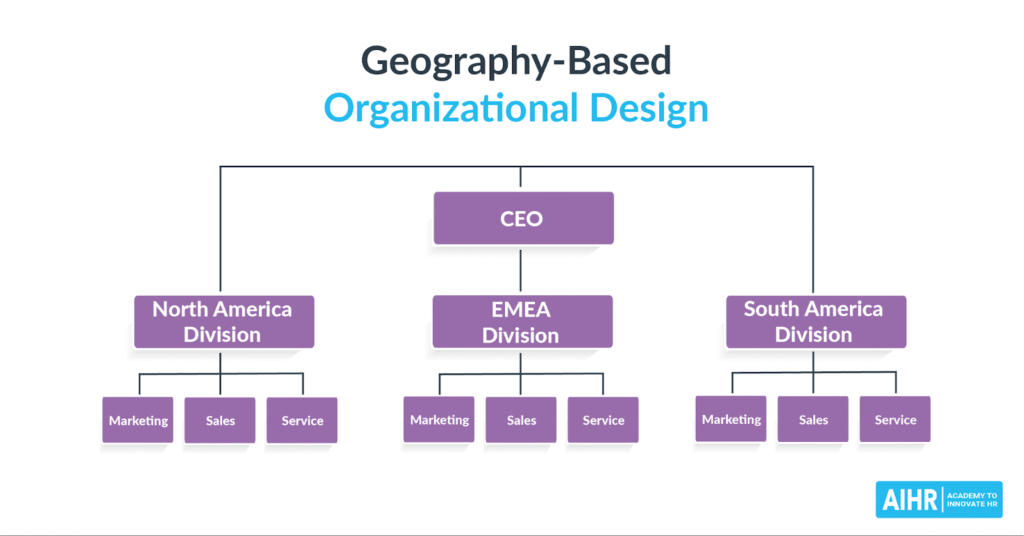
It’s the go-to setup for larger or global agencies that serve clients across borders and want to stay close to each market.
| Pros | Cons |
| Teams stay close to clients and understand local markets deeply. | Risk of inconsistent standards across offices |
| Regional leaders can make quick decisions based on time zone and context. | Duplicate roles increase operational costs |
| Improves cultural relevance and audience connection in each location. | Harder to maintain unified brand messaging |
| Encourages autonomy and leadership development across global offices. | Complex reporting across multiple geographies |
| Enhances adaptability to regional market trends and regulations. |
4. Flat Structure
The Flat Structure is where everyone reports directly to the founder or a small leadership core. Here, people wear multiple hats, switch roles often, and decisions happen quickly. It’s a flexible setup that suits startups or small teams where communication is constant.
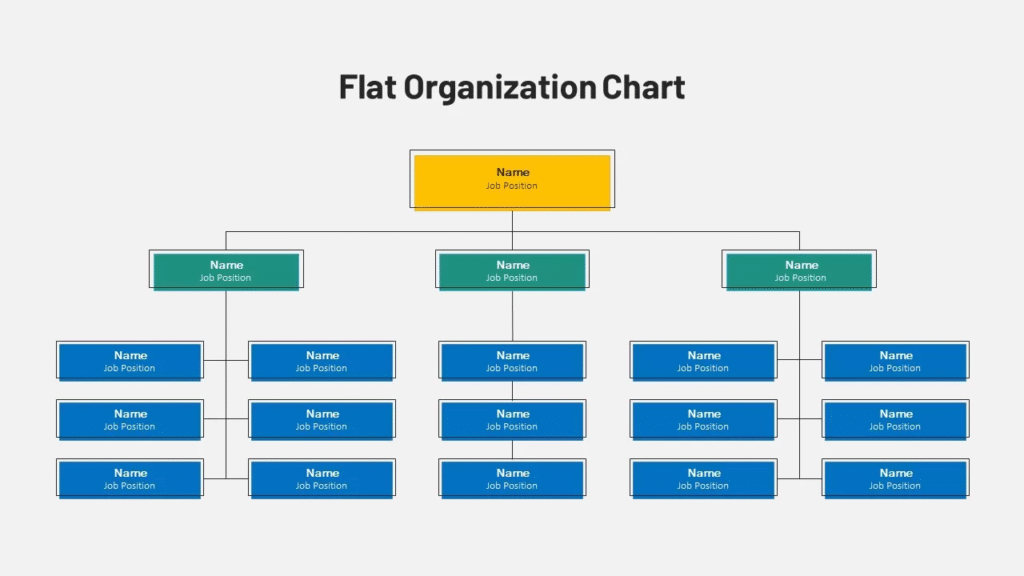
But as your client base grows and the team expands, things start to change. Without a few defined levels of management, the workload piles on the founders, and decision-making slows down.
| Pros | Cons |
| Speeds up decisions with fewer management layers. | Hard to scale beyond small teams. |
| Builds close collaboration across all team members. | Roles blur and overlap quickly. |
| Keeps communication transparent and direct. | Founders risk decision fatigue. |
| Encourages shared ownership and creative problem-solving. | Accountability can become unclear. |
| Reduces bureaucracy and unnecessary process overhead. |
5. Pod or Squad Structure
The pod or squad structure treats each small team as a mini-agency within the agency. Instead of departments working in silos, you’ll create cross-functional groups. Each group is usually made up of a strategist, account manager, designer, developer, and copywriter.

The biggest gains with this structure are that people with different skills work toward one goal. In fact, McKinsey found that when agencies focus on team-based changes, efficiency can jump by nearly 30%.
| Pros | Cons |
| Dedicated teams mean stronger client relationships and faster response times. | Resource overlap between pods can drain efficiency. |
| Encourages tight collaboration and shared ownership among diverse specialists. | Some pods may be overworked while others stay underutilized. |
| Pods can scale easily by adding new teams as clients grow. | Limited career growth if roles are fixed within small teams. |
| Keeps creative and strategic alignment consistent across projects. | |
| Builds autonomy and accountability within each pod. |
6. Matrix Structure
The matrix structure blends departmental expertise and project flexibility. In this setup, an employee works under both a functional manager (like a Creative Director) and a project manager for specific client work.
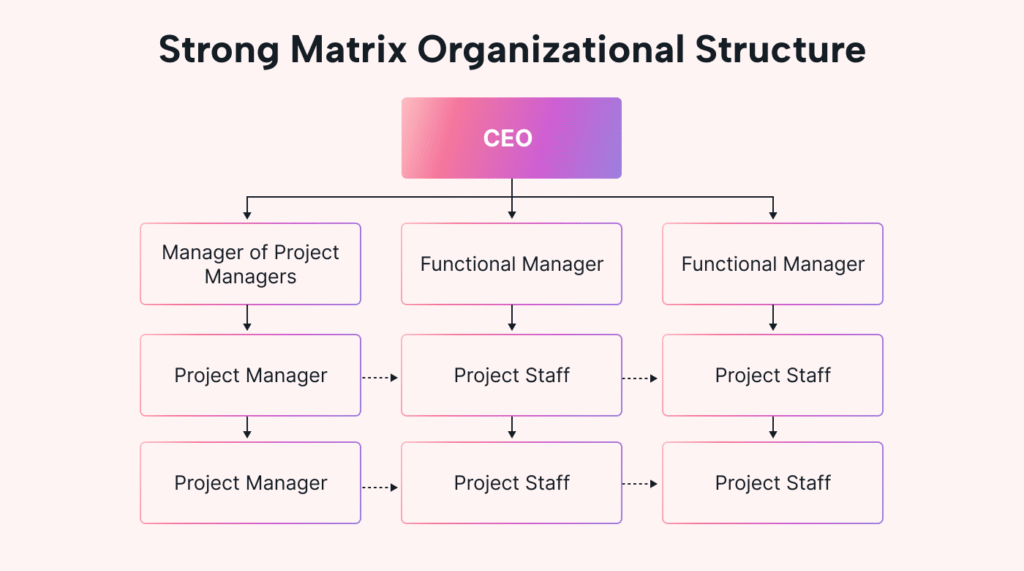
However, while it delivers flexibility, it also demands discipline, clarity, and communication.
| Pros | Cons |
| Access to specialized expertise across multiple departments. | Dual reporting can cause authority confusion. |
| Encourages collaboration between cross-functional teams. | Conflicting priorities between managers. |
| Balances project agility with operational stability. | Communication overload across multiple teams. |
| Improves knowledge-sharing and internal skill development. | Complex scheduling and resource conflicts. |
| Promotes innovation through multi-department collaboration. |
7. On-Demand or Freelance Network Structure
The on-demand or freelance network structure keeps your core team small and agile. Meanwhile, you rely on a pool of trusted freelancers or contractors for project delivery. Instead of hiring full-time specialists for every skill, you pull in experts only when you need them.
With this setup, you can scale up or down your agency based on workload while keeping overhead low.
| Pros | Cons |
| Reduces fixed expenses and operational overhead. | Quality can vary between freelance contributors. |
| Access to a wide range of specialized talent. | Harder to build a consistent culture or workflow. |
| Easier to experiment with new services or industries. | Risk of communication delays across time zones. |
| Minimizes long-term employee-related liabilities. | |
| Encourages creative collaboration with niche experts. |
Key Roles in a Well-Structured Agency Team
Every successful agency runs on the people behind it. So, here’s what a balanced agency team usually looks like.
- Agency Leadership (Founder/CEO/Directors): Set the vision, define priorities, and make final calls on growth, clients, and culture. They ensure every department aligns with the agency’s goals and long-term strategy.
- Account Manager: This role bridges strategy and execution by transforming client goals into actionable plans and keeping communication clear, timely, and human.
- Project Manager: They keep schedules tight, align departments, and make sure projects hit deadlines without burning out the team.
- Creative Director/Design Lead: From campaign ideas to visual identity, they guide designers, copywriters, and other creatives to maintain brand consistency and excellence.
- Strategist/Planner: Strategists research, analyze, and define the direction of campaigns or projects so every creative decision ties back to measurable goals.
- Content and Copy Team: They write, shape, and adapt language for different audiences, whether it’s a full campaign narrative or a single-line ad that lands perfectly.
- Technical and Development Team: From websites and automation to complex integrations, they connect technology with marketing to deliver.
- Performance/Media Specialist: They manage SEO, paid ads, and analytics to ensure that what your team creates performs well.
- Finance and Admin Support: They handle budgeting, billing, compliance, and cash flow to let everyone else stay focused on client work and growth.
- HR: They recruit great talent, shape development paths, and maintain an environment where team members feel valued and motivated.
How to Structure Agency Team for Remote or Hybrid Work
You need more than good Wi-fi to run a remote or hybrid agency team. Here’s how you should structure your team when distance plays a key role —
- Define Clear Roles and Accountability: Map out responsibilities and reporting lines. Everyone should know who they answer to and what the goals of the agency are, regardless of location.
- Create Cross-Functional Pods or Departments: Build small, balanced teams with clear goals following a pod or departmental model. It’ll keep collaboration strong and avoid communication bottlenecks.
- Centralize Communication Tools: Use consistent platforms for chat, meetings, and file sharing to prevent silos and confusion across time zones.
- Document Everything: Maintain an updated org chart, workflows, and project ownership in a shared system. It should act like your remote team’s single source of truth.
- Build Around Time Zone Overlaps: Schedule core hours where everyone overlaps for syncs, and let the rest of the work run asynchronously.
- Invest in Project Management Systems: Tools like task boards and time trackers keep visibility high. They replace physical oversight with data-driven accountability.
- Keep Culture Visible: Regular check-ins, virtual hangouts, and recognition moments make the structure feel human.
That’s why many hybrid agencies rely on Agency Handy. It centralizes communication, time tracking, billing, and feedback into one secure workspace. Whether your team’s across the hall or across continents, everyone stays aligned and accountable.
CTA: Run Your Entire Remote Agency through Agency Handy
Agency Team Structure Examples Based on Agency Types
Each agency has its own pace. Some excel through creative ideas, while others rely on data or precise media planning. But ultimately, a good structure is essential.
Let’s explore examples of different structures of teams across agencies.
1. Creative Agency Team Structure
A creative agency runs like a workshop of ideas with designers, writers, and strategists working together to bring brands to life. The structure balances creative freedom with project control to ensure campaigns stay inspired yet on schedule.
Core structure of a creative agency team —
- Creative Director
- Art Director
- Copywriter
- Designer
- Project Manager
- Account Executive
- Strategist/Planner
2. Marketing Agency Team Structure
A marketing agency’s team setup directly affects how your agency develops ideas and delivers to clients. The ideal structure needs experts in specific roles, but they must also work together smoothly.
Core structure of a marketing agency team —
- Agency Owner/CEO
- Account Director/Manager
- Creative Director
- Strategists/Planners
- Designers and Copywriters
- Media/Growth Managers
- Project Managers
- Analysts
3. Advertising Agency Team Structure
An advertising agency depends on a strong mix of creativity, strategy, and execution. To put it simply, each team has a special part to play. They build campaigns that successfully connect a brand with its audience and produce definite, positive results.
Core structure of an advertising agency team —
- Management
- Account Services
- Research and Marketing
- Creative Team
- Media Department
- Production
- Finance
4. Digital Marketing Agency Team Structure
A strong digital marketing agency runs on clarity, collaboration, and specialization. Every role plays its role to serve clients efficiently while balancing creativity with measurable results.
Core structure of a team for digital marketing agency —
- Account Manager
- Digital Marketing Manager
- SEO Specialist
- Paid Media Specialist
- Content Marketing Manager
- Social Media Manager
- Email Marketer
- Marketing Analyst
- Graphic Designer/Developer
5. Social Media Agency Team Structure
Social media agency structure should keep your creative, strategic, and analytical minds moving in sync. Every role exists to make the campaigns successful and bring results.
Core structure of a social meadi agency team —
- Social Media Director
- Social Media Manager
- Content Creator
- Community Manager
- Paid Media Specialist
- Data Analyst
- Creative Designer/Video Editor
6. Design Agency Team Structure
If you’re building a design agency team, treat it as if you’re creating a living system. You need people who turn raw ideas into results, keep creativity organized, and make collaboration feel natural.
Core structure of a design agency team —
- Creative Director
- Art Director
- Designers (UI/UX, Graphic, Web)
- Copywriter
- Project Manager
- Account Manager
- Production Artist
7. Digital Agency Team Structure
The clear structure of a digital agency team syncs the movement of creativity, technology, and strategy. Plus, specific roles prevent confusion, improve collaboration, and ensure that every client project stays on track.
Core structure of a digital agency team —
- Leadership Team
- Account Management
- Creative Team
- Technical Team
- Marketing Team
- Support Staff
8. PR Agency Team Structure
A solid PR agency team includes thinkers, writers, and media pros working side by side to build your reputation and keep your brand in the spotlight. Everyone has a role that matters, from the coordinator who manages the details to the director who sets the big-picture vision.
Core structure of a PR agency team —
- Leadership Team
- Account Management
- Media Relations
- Creative Team
- Digital Team
- Analytics Team
Why Does Agency Team Structure Matter So Much?
We’ve seen agencies crumble because they lacked structure for their team. So, let’s break down why this matters more than most founders realize.
Clear Roles Build Real Accountability
When everyone knows what they own, everything runs smoothly. A defined team structure removes overlap and finger-pointing. It tells each person where they fit in and what success looks like.
A Netherlands-based HR consulting firm, Effectory, found that when team members clearly understand their roles, they become 53% more efficient.
In fact, when people know exactly what’s expected of them, 86% report feeling more effective at work.
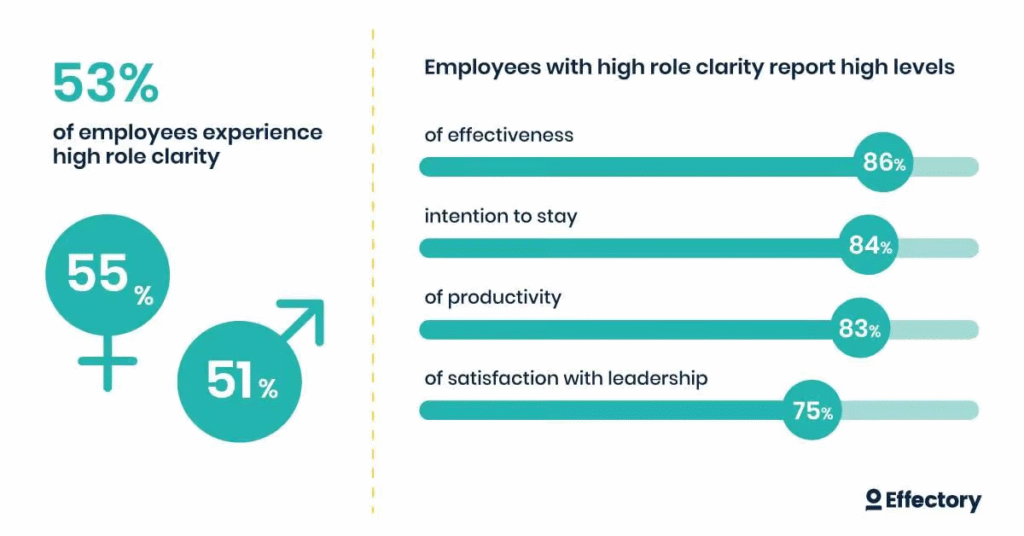
Structure Simplifies Workflow
A clear hierarchy helps project managers —
- Match the right people to the right jobs.
- Distribute work fairly
- Keep deadlines realistic.
Ultimately, you reduce the complications and increase turnarounds without wasting time on searching through endless email threads.
That’s where Agency Handy makes a difference. Every task, deadline, and conversation stays in one place. Thus, your team gets instant clarity on responsibilities, priorities, and exactly how close you are to hitting delivery dates.
Defined Authority Speeds Up Decisions
Nothing slows down momentum like waiting for approvals that never come. Right there, defined reporting lines permit team members to act. Managers make decisions within their lane, and projects move forward without friction.
That way, it keeps your agency responsive when clients change direction mid-project.
Communication Flows Naturally
When teams know who to report to and how information travels, collaboration becomes easier. Strategy connects with creative, accounts align with delivery, and everyone sees how their work fits into the bigger picture.
That’s what keeps ideas flowing instead of dying in silos. Agency Handy brings this kind of alignment to life. Your clients, managers, and creatives can comment directly on files, share feedback in real time, and track support tickets without leaving the platform.
Skill-Based Teams Improve Quality
When you group people by expertise, like creative, strategy, account management, or technical, you let specialists excel. Everyone works in their zone of strength, and managers can pull the right skills into the right project.
Over time, this kind of alignment builds consistency and raises the quality of every deliverable your agency produces.
How to Choose the Right Team Structure for Your Agency
Most founders or entrepreneurs start to feel that their agency is either too big or too small for its setup. Projects pile up, people overlap, and decisions slow down. That’s usually the sign to rethink your team structure.
Here’s how you should approach it step by step —
Start With Where You Are Now
Before you rebuild anything, look at how your agency works today. Who handles what? Where does communication break?
Most small agencies start flat. Well, that’s fine in the early days, but once client work expands, you’ll need more defined roles.
At that stage, shifting toward a Functional, Pod, or Matrix Structure helps distribute leadership and reduce complexity.
Match It to Your Services
Your services should shape your structure.
If your agency offers specialized services like SEO, branding, or production, a Functional Structure keeps experts stuck in their zone.
But if you run integrated campaigns or multi-channel marketing, a Pod or Matrix Structure brings strategists, creatives, and managers together around each client.
Eventually, your goal should be to make your structure reflect how clients experience your service, from strategy to delivery.
Consider Your Team Size and Leadership Style
A Flat Structure feels quick and personal when you’re small, but it’s hard to scale beyond a dozen people.
Once your team grows, you’ll need layers, like team leads, account managers, and maybe even department heads.
Your own leadership style matters, too. If you like being in every project, stay flat. But if you’re ready to focus on strategy and growth, you should delegate. A clear chain of responsibility keeps your agency from depending solely on you.
Shape It Around Culture and Communication
Structure decides how people talk, collaborate, and solve problems.
For instance, a rigid hierarchy might slow down creativity in a design agency. However, for a data-driven marketing team, it’s often what keeps things running smoothly to ensure accountability and clear direction.
So, if your strength is creativity, go for Pods as they’re great for tight-knit collaboration. Again, if your agency spans cities or time zones, a Matrix Structure ensures teams stay connected without losing clarity.
Build for Scalability
A good structure grows with you. You should be able to add new roles, teams, or even offices without rebuilding everything from scratch.
Matrix and Pod Structures scale naturally. That’s because they can absorb more clients and team members without disrupting existing workflows. So, whatever you choose, design it for expansion.
Balance Cost, Flexibility, and Stability
If you’re running lean or prefer fewer full-time hires, a Virtual or Freelance Network Structure might fit. It’s flexible and budget-friendly, which lets you bring in specialized talent when needed.
Just make sure your systems are tight. A few things, like communication, onboarding, and quality checks, must be non-negotiable. As you grow, transitioning to a hybrid setup often gives the best balance of flexibility and reliability.
Keep Evolving as You Grow
No structure lasts forever. As your client base changes or your services expand, revisit how your agency operates. Also, ask your leads what’s slowing them down. Plus, look for signs of overload or miscommunication.
Final Words
Instead of having layers of approval, a solid agency team must have clarity. When everyone knows their lane, work moves faster, communication feels easier, and clients get results in a timely manner.
If you want to bring that kind of flow to your agency, Agency Handy makes it simple. You get visual task boards, built-in collaboration, CRM tracking, and automated billing, all in one place. It’s how you keep your agency structured and ready to scale.
FAQs
What is an agency team structure?
An agency team structure defines how people, roles, and workflows are organized within an agency. It shows who reports to whom, how departments collaborate, and how communication flows to deliver projects properly.
What roles are essential in an agency team structure?
Essential roles in an agency team structure include account managers, project managers, creative professionals, strategists, and specialists like SEO experts or media buyers. Together, they handle client relations, creative output, and campaign strategy.
How does remote work impact an agency’s team structure?
Remote work reshapes an agency’s team structure by emphasizing communication, process, and trust. Clear roles, strong collaboration tools, and frequent check-ins help teams stay aligned and productive across locations.






